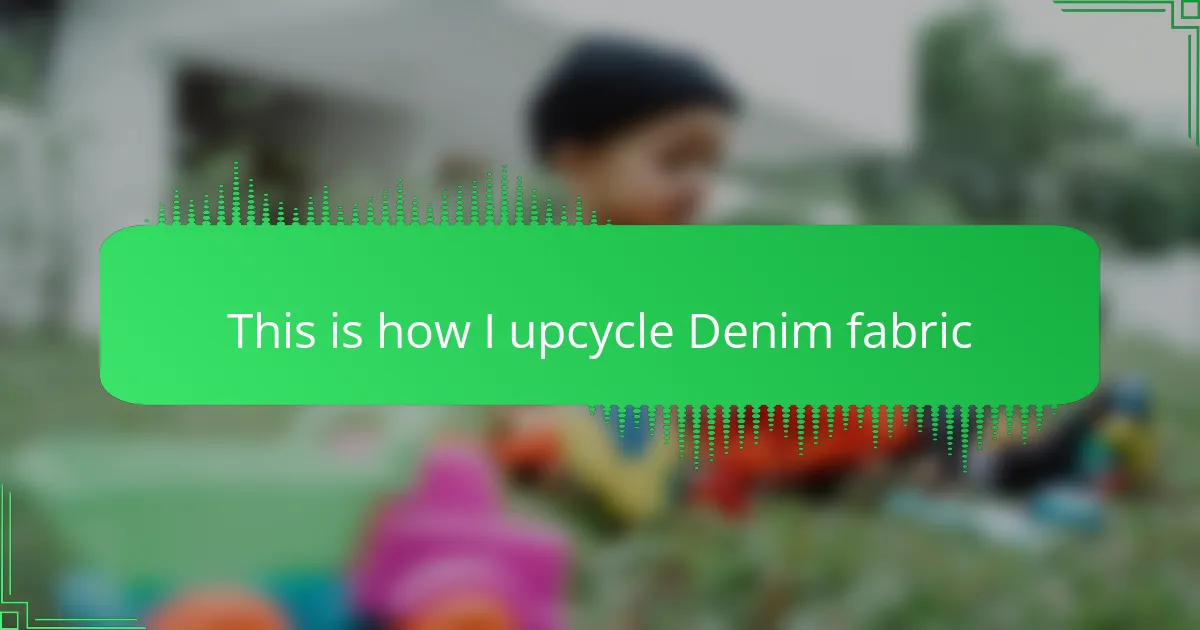Key takeaways
- Denim is a durable fabric that requires thoughtful design adjustments for comfort when upcycling into t-shirts.
- Upcycling denim reduces waste, adds unique texture, and supports sustainable fashion practices.
- Essential tools like fabric scissors and heavy-duty needles are crucial for successful denim projects.
- Patience and creativity lead to unique designs; using scraps can enhance the style and reduce material waste.
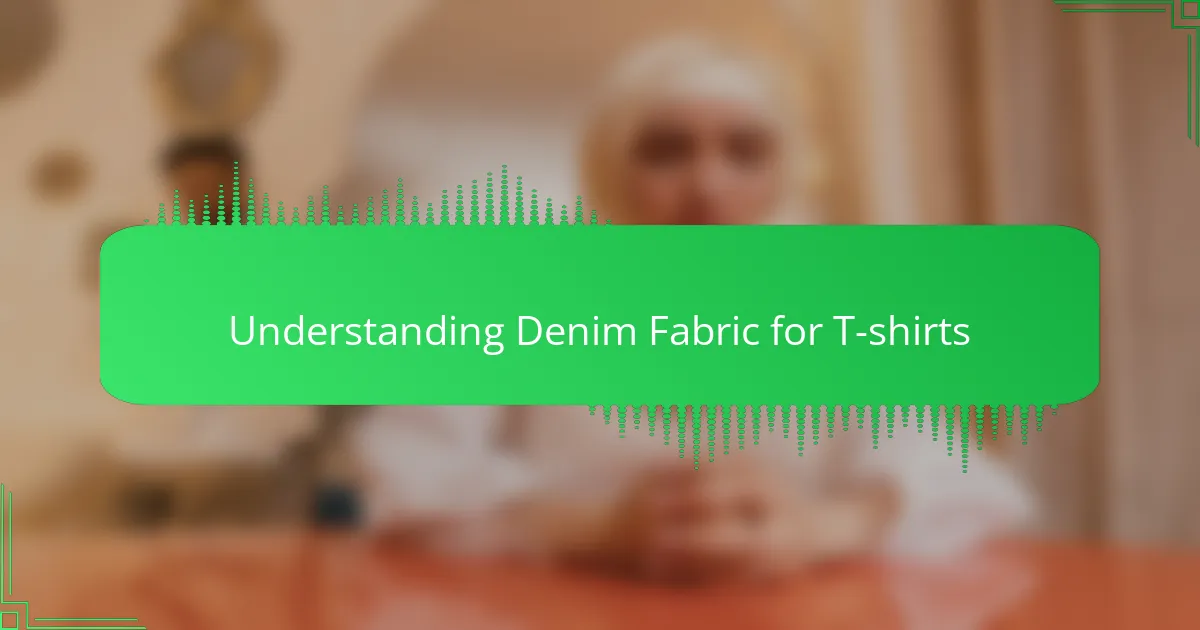
Understanding Denim Fabric for T-shirts
Denim fabric has a distinct texture and weight that can make it both a challenge and a joy to work with when designing t-shirts. From my experience, its durability means your creations can last longer, but its thickness calls for some thoughtful pattern adjustments to maintain comfort and style.
When I first started upcycling denim into t-shirts, I learned that understanding the fabric’s unique properties was crucial. Denim isn’t just any cotton—it’s woven tightly, often with a twill pattern, giving it strength and a bit of stretch. Here’s what I focus on to get the best results:
- Fabric Weight: Denim is heavier than typical t-shirt fabric, affecting fit and drape.
- Texture: The twill weave creates a diagonal pattern, adding visual interest.
- Stretch: Some denim blends have elastane for flexibility, which impacts comfort.
- Color and Wash: Different washes provide unique aesthetics and influence fading over time.
- Durability: Its sturdy nature makes it great for long-lasting apparel.
- Breathability: Denim can be less breathable, so it’s best paired with lighter materials or used in panels.
This knowledge transformed how I approach denim t-shirt designs, balancing its rugged charm with wearability.
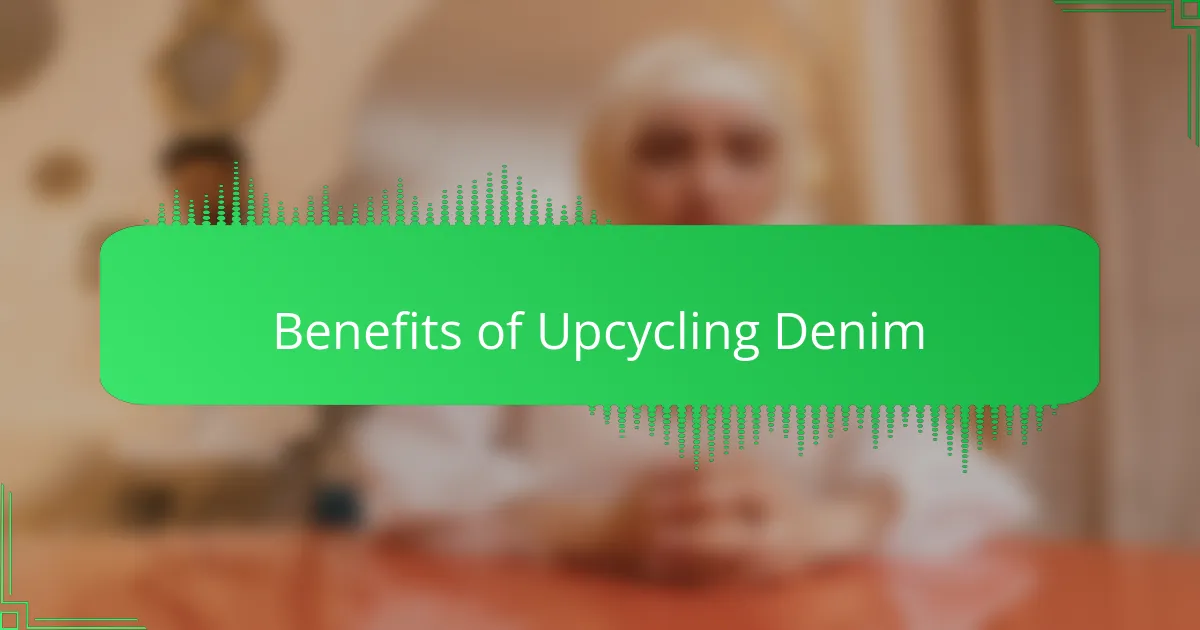
Benefits of Upcycling Denim
Upcycling denim isn’t just about giving old fabric a new life—it’s about tapping into a rich texture that feels both timeless and versatile. From my experience, transforming worn jeans into unique t-shirt accents has always brought a sense of satisfaction, knowing that each piece carries a story. It’s rewarding to see how something destined for the trash can become a statement of creativity and sustainability.
What I’ve found remarkable is how upcycled denim adds durability and character to t-shirt designs. The material’s sturdy nature means your creations hold up well over time, and that slightly faded, lived-in look gives each item a one-of-a-kind personality. Plus, embracing this approach in design nurtures eco-friendly habits, which feels good knowing I’m reducing waste.
- Reduces textile waste, lowering environmental impact
- Adds unique texture and durability to t-shirt designs
- Encourages creativity with one-of-a-kind patterns and patches
- Saves money by repurposing existing materials
- Supports sustainable fashion practices through mindful consumption

Tools Needed for Denim Upcycling
I’ve found that having the right tools makes all the difference when upcycling denim fabric. Simple items like sharp fabric scissors and a sturdy sewing needle can turn a dull piece of old jeans into a standout t-shirt feature. Over time, I learned that investing in a good pair of scissors saved me hours of frustration—cutting denim is tough work!
| Tool | Purpose |
|---|---|
| Fabric Scissors | Clean cuts through thick denim |
| Heavy-Duty Sewing Needle | Handles dense fabric layers without breaking |
| Measuring Tape | Accurate dimensions for precise cutting |
| Chalk or Fabric Marker | Marks cutting lines without staining |
| Seam Ripper | Easy removal of unwanted stitches or seams |
| Thread (Polyester or Cotton-wrapped Polyester) | Strong enough to hold denim seams securely |
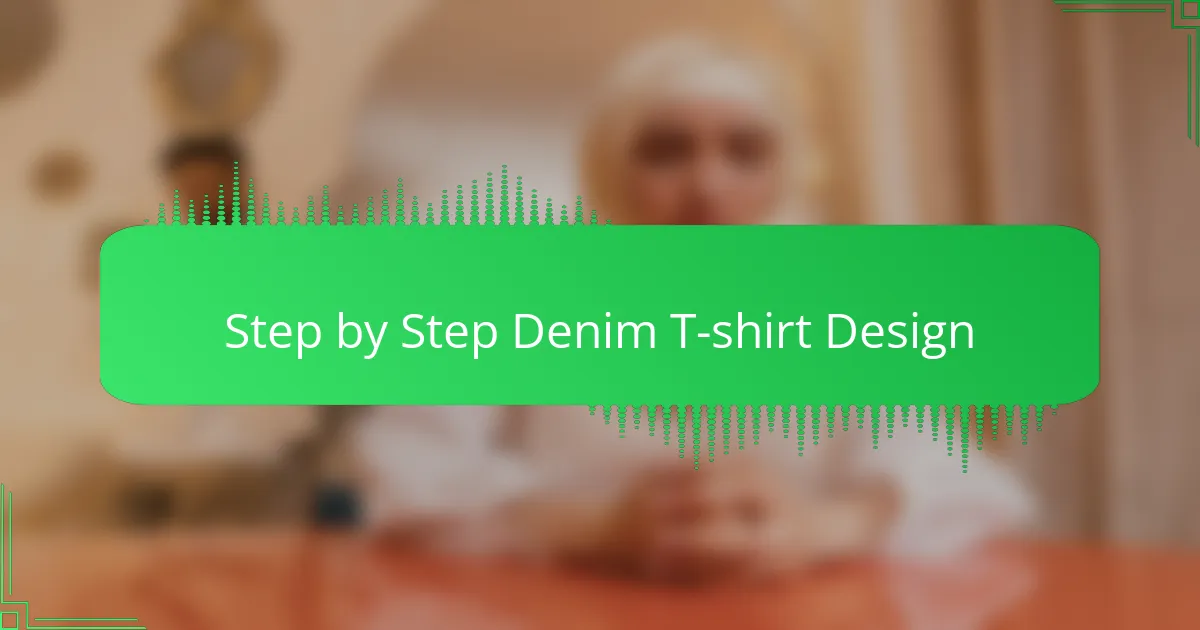
Step by Step Denim T-shirt Design
Working with denim fabric to design a t-shirt has always been an exciting challenge for me. The texture and durability of denim bring a unique character to the garment, but it also requires patience and precision. I remember the first time I upcycled an old pair of jeans into a custom t-shirt—it felt amazing turning something worn out into a trendy piece.
Here’s how I break down the process step by step:
- Select a well-worn denim piece with minimal damage but lots of character.
- Carefully deconstruct the garment, saving usable fabric sections.
- Sketch your t-shirt design, considering how different denim textures will highlight certain areas.
- Cut the denim pieces according to your pattern, keeping seams in mind.
- Use a strong needle and thread suitable for denim to sew the pieces together.
- Add creative details like distressing, patches, or painted designs to personalize.
- Finish the edges to prevent fraying, as denim can be prone to this.
- Try on and make any necessary adjustments for comfort and fit.
Each step requires attention, but the sense of accomplishment when your denim t-shirt comes together makes it all worthwhile.

Creative Techniques for Denim T-shirts
Creative Techniques for Denim T-shirts
Denim offers a unique texture and durability that’s perfect for t-shirt design. I love experimenting with distressing techniques like sanding and fraying the edges to give the fabric a worn, vintage vibe. Adding embroidery or patches not only personalizes the shirt but also transforms old denim into wearable art that feels meaningful rather than just recycled.
| Technique | Effect |
|---|---|
| Distressing (Sanding/Fraying) | Creates a vintage, textured look by softening the stiff denim and revealing worn areas |
| Embroidery | Adds detailed, colorful designs that make each piece unique and personalized |
| Patches | Allows creative expression and covers imperfections while making a bold fashion statement |
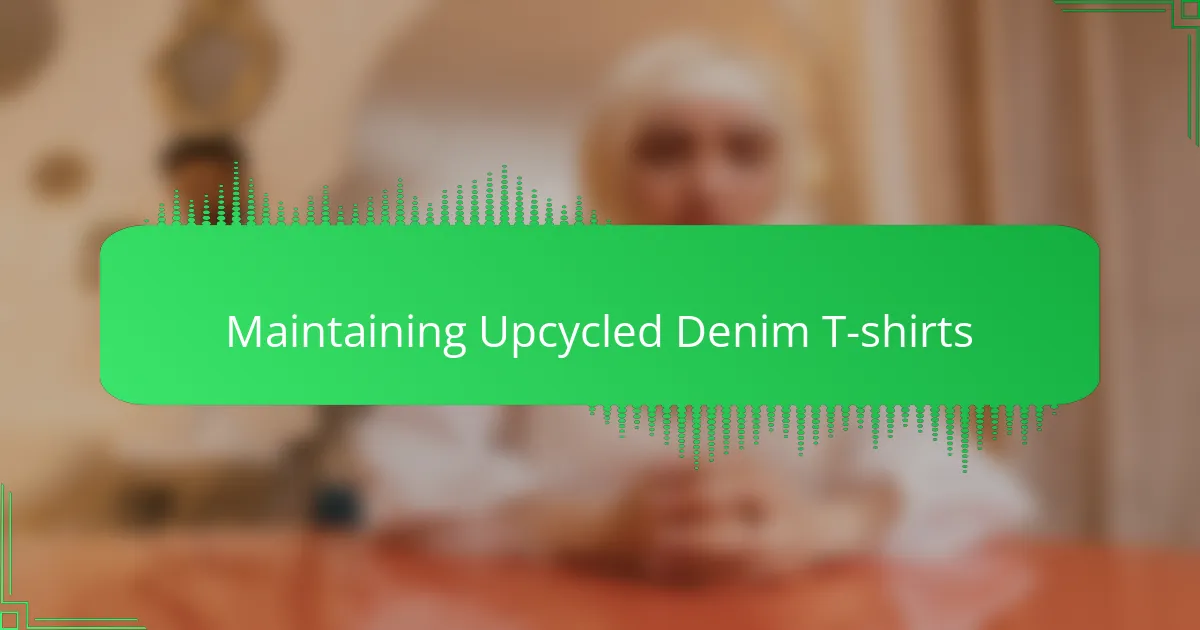
Maintaining Upcycled Denim T-shirts
Maintaining upcycled denim t-shirts requires a bit more care to preserve their unique texture and color. From my experience, washing them inside out in cold water helps prevent fading and keeps the fabric soft. I also avoid using harsh detergents, which can wear down the denim faster.
| Care Aspect | Upcycled Denim T-Shirts |
|---|---|
| Washing | Cold water, inside out |
| Detergent | Mild, denim-friendly |
| Drying | Air dry preferred to maintain shape |
| Ironing | Low heat setting recommended |
| Frequency | Only when necessary to extend lifespan |

Personal Tips for Successful Upcycling
I’ve found that patience is key when working with denim. It’s a tough fabric, but that’s what makes it so rewarding to transform. Taking your time to carefully cut and stitch can turn even the oldest jeans into something stylish and fresh.
Also, don’t throw away those scraps! Small pieces of denim are perfect for adding textured details or patches to t-shirts. I remember salvaging bits from an old denim jacket and creating unique pocket designs that got so many compliments.
| Tip | Why It Matters |
|---|---|
| Be Patient | Denim is thick and sturdy, requiring careful handling to avoid damage |
| Use Scraps Creatively | Small denim pieces add character and reduce waste |
| Reinforce Seams | Ensures durability and a polished finish for upcycled designs |
